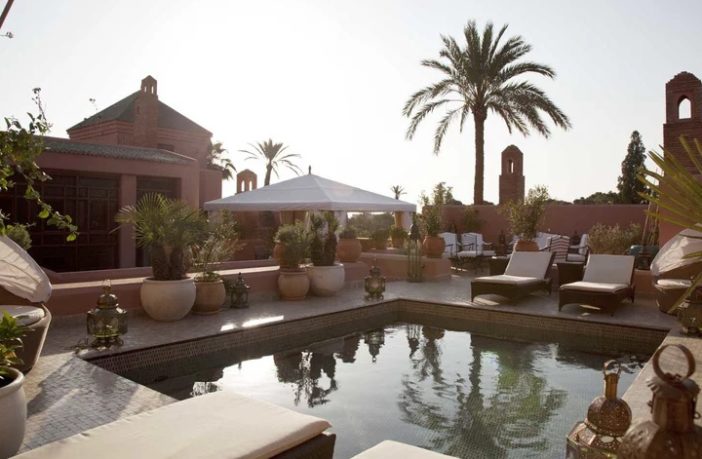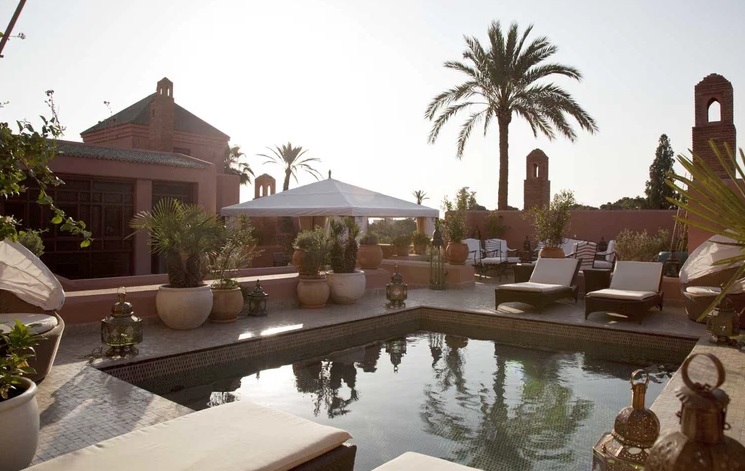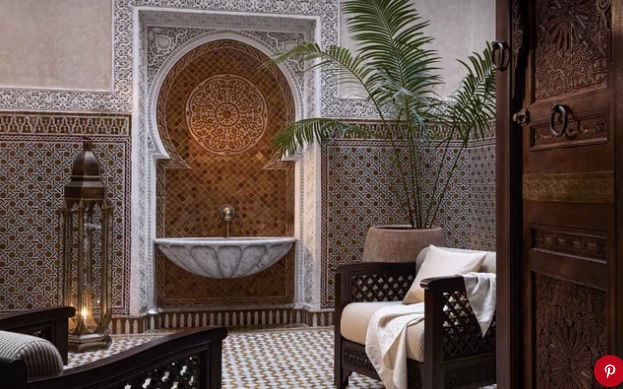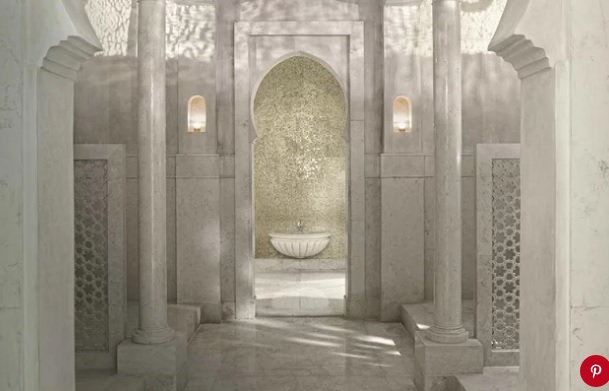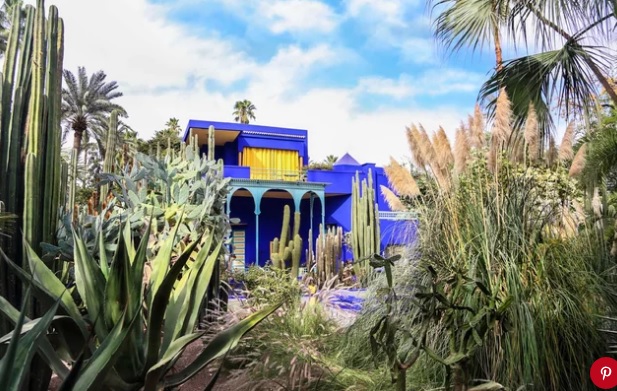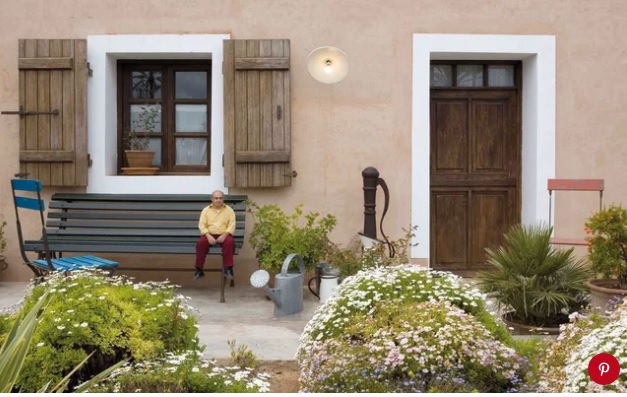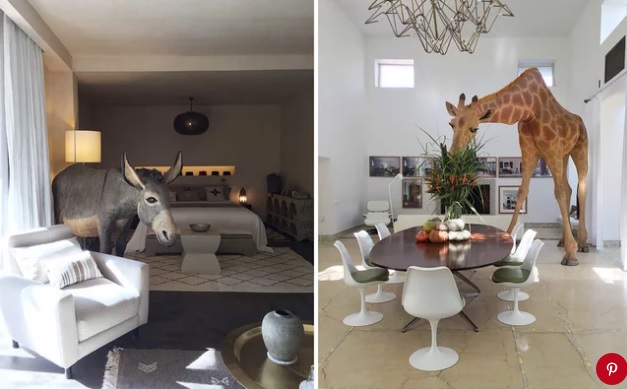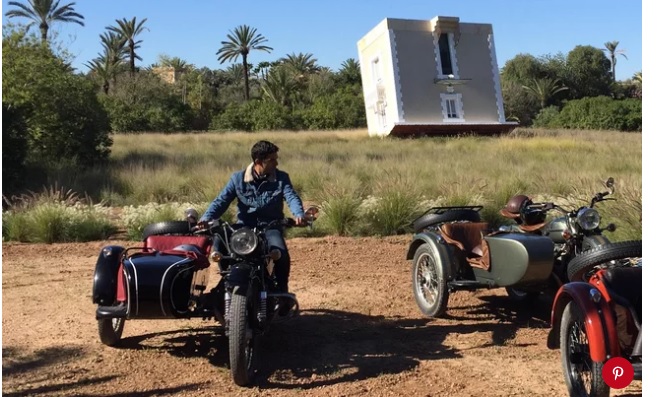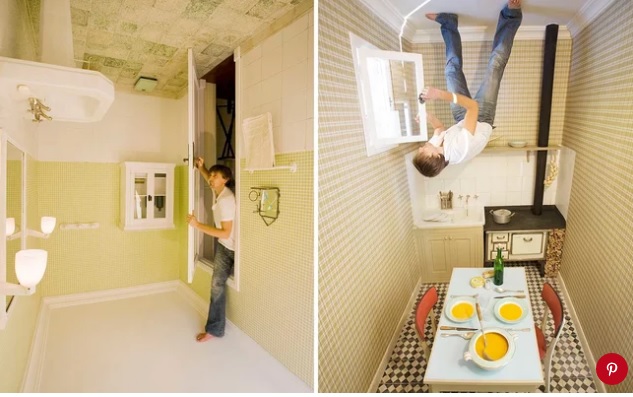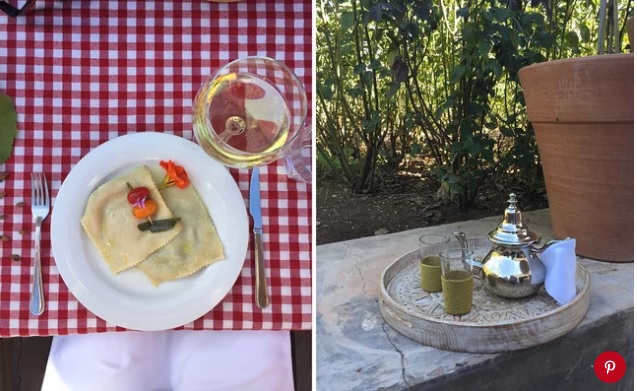Courtesy of Royal Mansour
Travel + Leisure
Laura Itzkowitz
“Marrakech is a big couscous with 24 vegetables and all the colors,” my guide Mustapha Chouquir said as he led me and my travel companions through the narrow lanes of the souk in Marrakech. With his traditional djellaba and prayer cap, the self-declared “Marrakech GPS” may have looked conservative on first glance, but he proved to me that first impressions aren’t always right.
The previous evening, I had wandered over to Jemaa el Fna, the bustling main square where people gathered around musicians playing, women on low plastic stools beckoned for passersby to have their hands hennaed, and vendors selling fruits and nuts offered tastes of their wares. A movie was being projected on a huge screen as part of the Marrakech International Film Festival. It seemed like the entire population of Marrakech was there. I made it about a block into the souk before turning back, nervous about being late to dinner. I was excited to return and glad to have Mustapha — who guided Madonna when she visited for her 60th birthday — guide me through the winding streets packed with shops selling everything from olives and spices to antique furniture and rugs.
I was in Marrakech — a city I’d dreamed about visiting for years — for four days, with a mission to soak up the best the dynamic city had to offer. Before arriving, I’d heard rave reviews of the Royal Mansour and had suitably high expectations. Built by King Mohammed IV, the hotel is an intimate oasis just a few blocks from the Medina. An ode to Moroccan architecture and design, it’s comprised of 53 private riads, three restaurants by Michelin-starred Parisian chef Yannick Alléno (a fourth is currently being renovated), two bars, a boutique, two swimming pools, extensive gardens, and a three-story spa. A staggering 1,200 artisans and craftsmen were commissioned to create the hotel, which incorporates zellige tiles, hand-carved wooden ceilings, rich textiles, and beautiful ceramics. Staff members, which outnumber guests ten to one, don chic interpretations of traditional Moroccan clothing.
Mornings started with breakfast (Moroccan crepes, slow scrambled eggs served in a tagine, fresh fruit, and coffee) served on the rooftop terrace of my riad. Traditionally, a riad is a Moroccan house built around a central courtyard with a fountain. Though the Royal Mansour’s smaller riads don’t have central courtyards, each one is a three-story apartment with a ground-floor living room, a bedroom and master bathroom on the second floor, and a rooftop terrace with a plunge pool. The design was elegant, but not over the top. Relaxing in my riad after excursions, I felt rooted in Morocco’s rich culture. From my bedroom, I could hear the call to prayer.
Getty Images
My days in Marrakech were a blur of inspiring cultural excursions and trips to must-visit sites. I loved visiting the year-old Musée Yves Saint Laurent and the Jardin Majorelle, which the late designer, who credited the city with opening his eyes to color, saved from demolition. But the most incredible highlight was taking a sidecar tour with Insiders Experience. Thomas Chabrieres, the company’s founder, and two of his guides picked us up in vintage sidecars for an exhilarating jaunt through the medina and out to the Palm Grove, where we explored French artist Jean-François Fourtou’s whimsical estate Dar El Sadaka.
Courtesy of Dar El Sadaka
Courtesy of Laura Itzkowitz
We struggled to keep our balance as we stumbled through “The House Fallen from the Sky,” an upside-down rendering of the artist’s grandfather’s house in France. We peeked inside various rooms populated by life-size animals, including a giraffe grazing in the dining room and a group of chimpanzees hanging from ropes in the living room. We finished with lunch at the “Giant’s House,” inspired by the artist’s grandmother’s house, where we ate oversize ravioli and swordfish brochettes followed by Moroccan mint tea. Afterwards, we zipped back into the medina for a tour of French perfumer Serge Lutens’ house: a mysteriously ornate building without any windows that Lutens built with painstaking attention to detail but never actually lived in. The tour is exclusively available for guests of the Royal Mansour.
Courtesy of Dar El Sadaka
Back on the hotel grounds, I experienced my first hammam treatment at the Royal Mansour’s renowned spa. In contrast to the colorful gardens and riads, the spa is an all-white oasis of tranquility reputed as having the city’s most luxurious hammam. I was a bit nervous, as I wasn’t sure exactly what to expect, but my treatment therapist was kind and patient as she guided me through the ritual cleansing, which involves various soaps, scrubs, and lotions before culminating in a dip in the cold pool. When it was over, my skin felt softer than it ever had before.
Courtesy of Laura Itzkowitz
Of course, Marrakech has other luxury hotels: The El Fenn may be more modern and La Mamounia a hotspot for people who want to see and be seen, but the Royal Mansour is truly in a league of its own. First impressions aren’t always right, but in this case, the Royal Mansour gives back exactly what you see — authentic Moroccan luxury.




